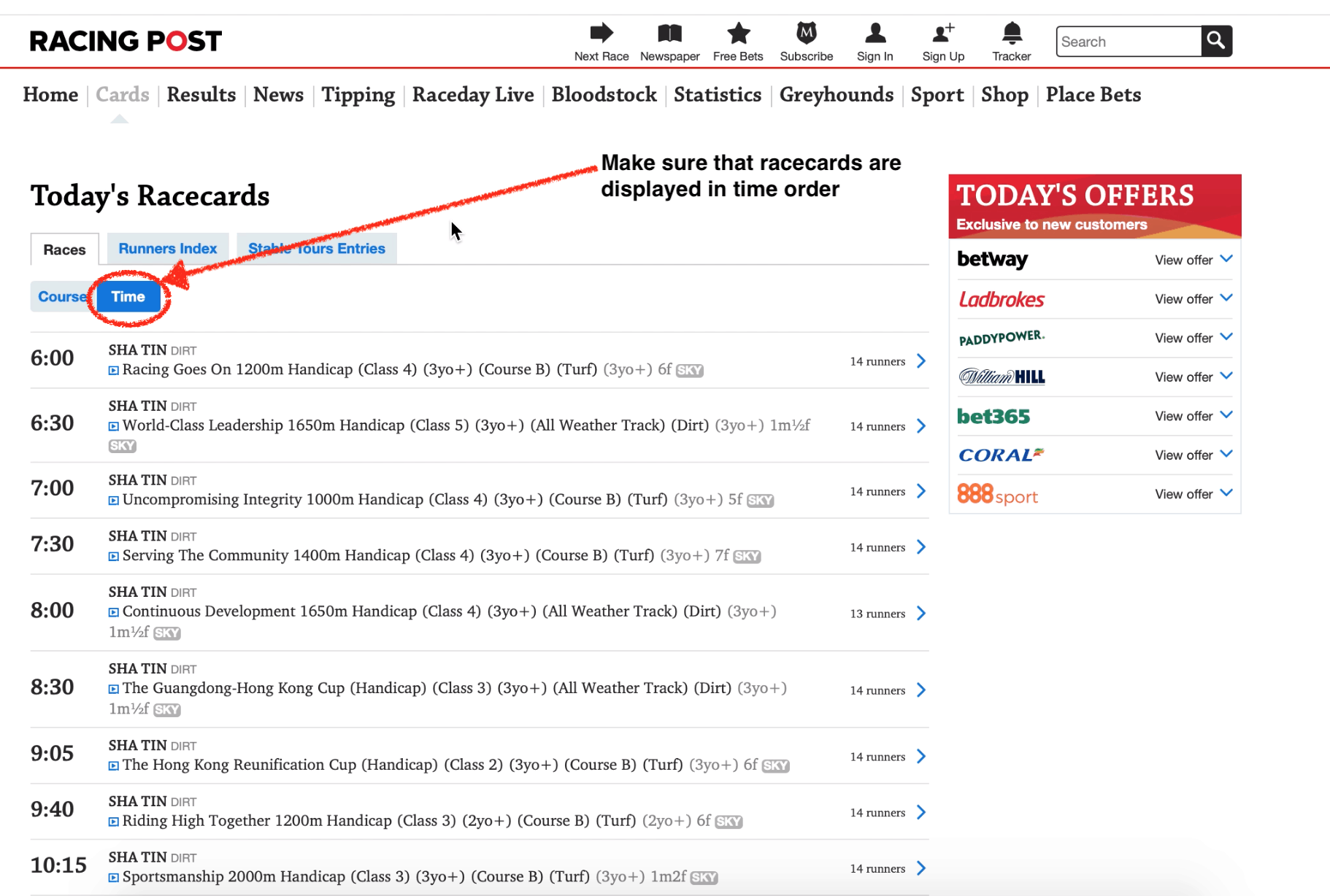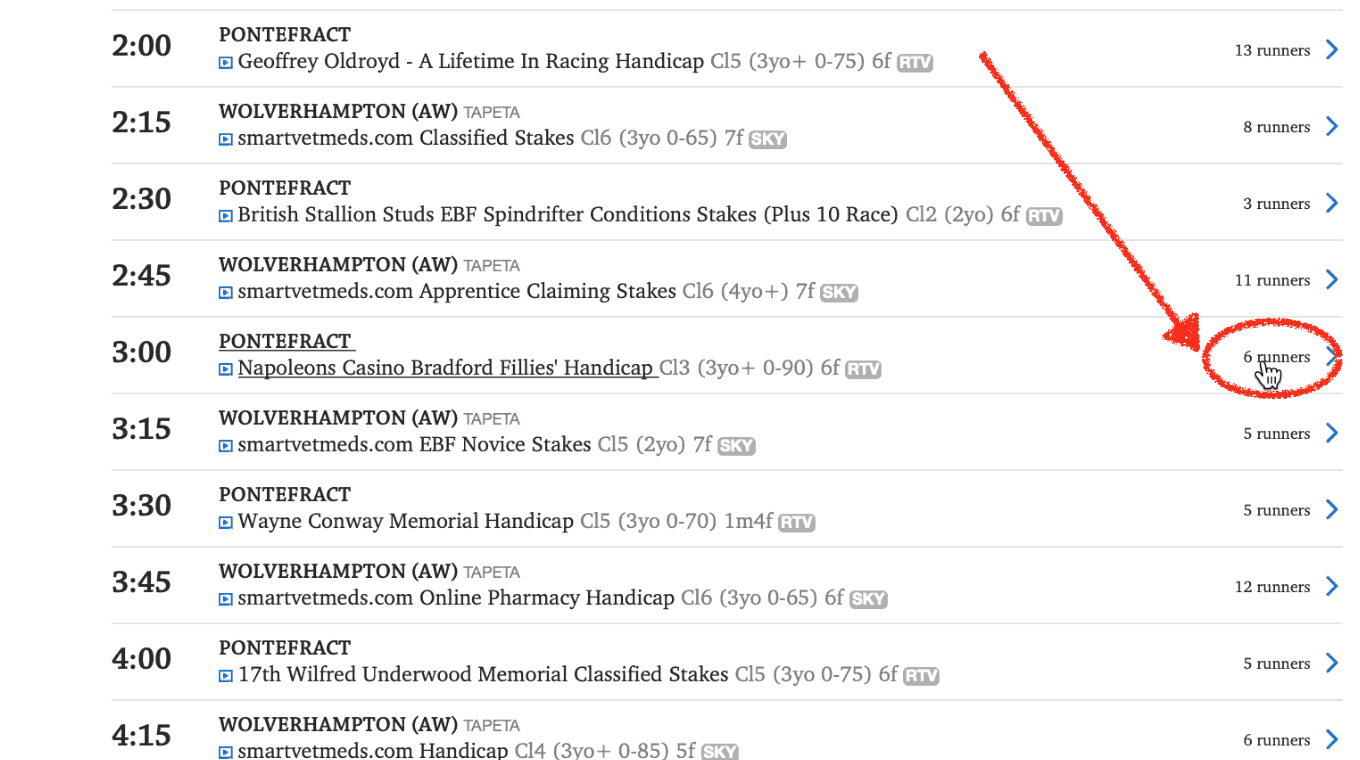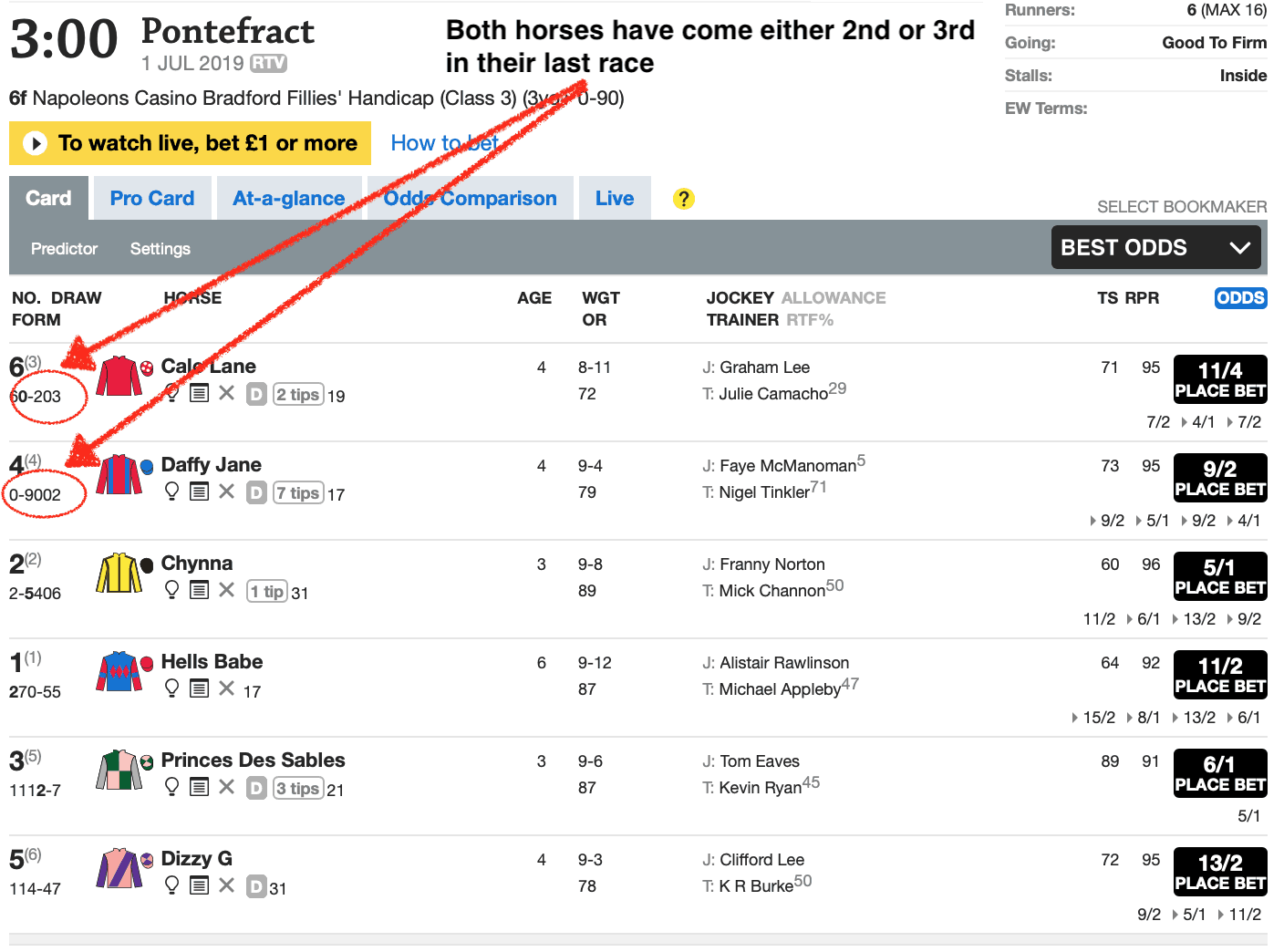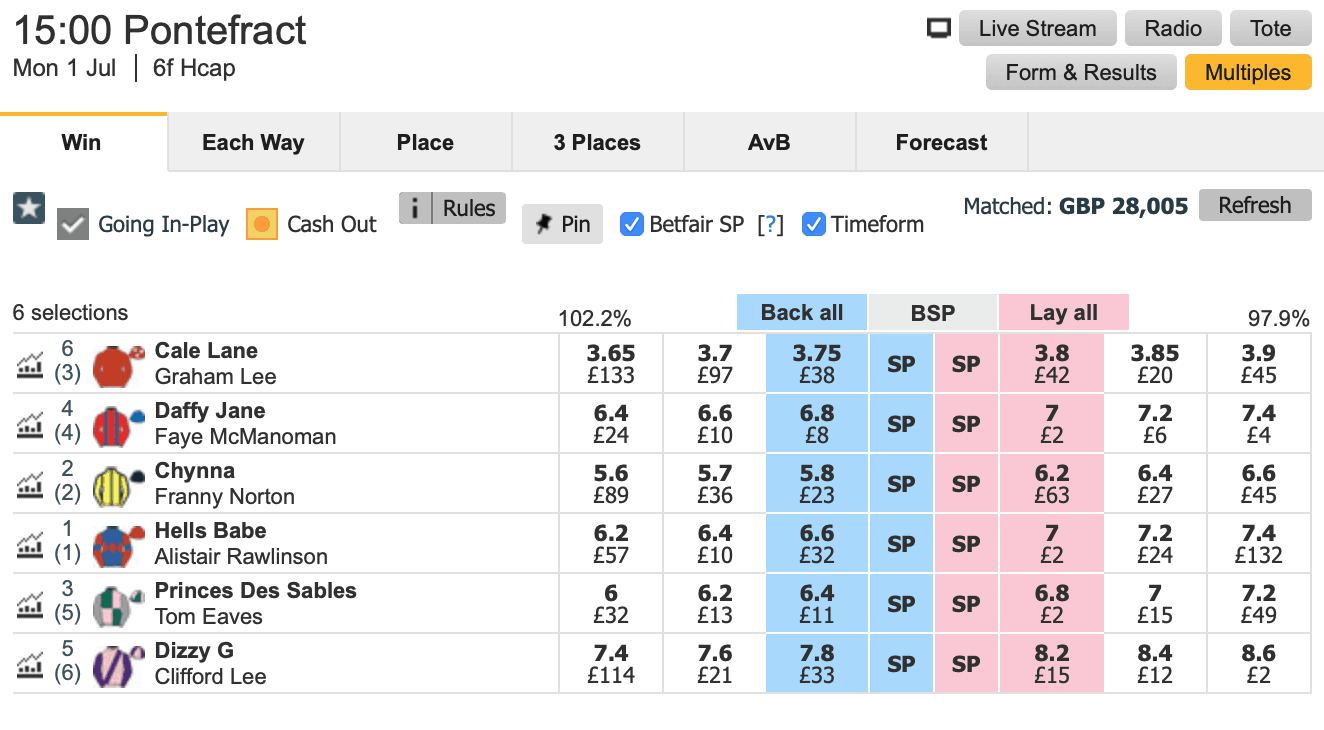Dutching Part II – How To Find Quick And Easy Profits
Last week, I went through some of the basics of how dutching works. I covered percentages and how the probabilities work. You can read that post – here.
Moving on from the basics, today I wanted to look at a quick and easy way to find dutching selections.
There are some further, more complex ways of dutching but I'm going to save them for the end of this series, as requested by some of our readers.
The reality is, you want to know how to find dutching opportunities!
So, here we go –
The first thing we need to do is to find qualifying races.
In order to do this we need to open the Racing Post website – Here
The link above should take you straight to the cards in time order. The reason we do this will become evident in the next paragraph.
Selection Criteria
- We look for handicaps of 8 or fewer runners
- We exclude 2-year-old races
- We focus ONLY on the top two in the betting
- We look at the form and compare it to today's race
Now, the first three rules of this selection criteria are simple enough. It's rule number 4 that becomes subjective.
Let's take a quick look at the procedure I've done below of me finding the qualifying races –

Scrolling through the races and finding a qualifier, as per the image below, we need to delve a little deeper into the top two of the market and look at their form.

The qualifying race is the 3:00 at Pontefract and from the betting, we can see that Cale Lane and Daffy Jane are the top two in the betting. (you'll see this in the image, below).
We now have our two qualifiers in the race BUT we need to delve a little deeper into their form.
This is where it becomes, somewhat, subjective and form reading can offer different opinions from different people.
Let's assume, for the purposes of this article, that we keep it simple and agree upon the fact, that both Cale Lane and Daffy Jane, have placed on their last outings.
You can see that here –

We'll assume, that these horses are most likely to improve from their last outings and merit a dutch bet.
The next step in our criteria is to simply place our bets.
We head over to Betfair and check out the odds for both our selections –

We can see that Cale Lane is 3.75 to back and Daffy Jane is 6.8 to back.
Using last week's article and working on the percentages, we get the following –
Cale Lane = 3.75. So 100% divided by 3.75 = 26.67% chance of winning
Daffy Lane = 6.8. So 100% divided by 6.8 = 14.71% chance of winning
Add the two together and we get – 26.67% + 14.71% = 41.38%.
We now divide the 41.38% into 100 to get = 2.42 in decimal odds.
This equates into just over 11/8 in terms of fractional odds.
So, we take the percentages and this decides what stakes we will be using.
Cale Lane is a 26.67% chance, so we would stake £26.67 at odds of 3.75
Daffy Lane is a 14.71% chance, so we would stake £14.71 at odds of 6.8
This would equate to a total stake of £41.38 and a return of £100 should either horse win.
Should either of them win, we would see a profit of £58.65 or, an ROI of 70.55%. That's pretty good for a betting event and something that we should always be on the lookout for!
There's actually a lot more to the above than meets the eye and we need to take into account what happens if there are losers, how to manage our bankroll and how to adapt our stakes accordingly.
Of course, there's also the calculation of how to work out your stakes, if you don't want to return £100. It could be that a tenner would suffice. Next week, we'll look at how these percentages can be equated into much smaller stakes.
All of this will be covered in the next article, but I hope the above will highlight some of the quick and simple ways to use dutching in your everyday betting.